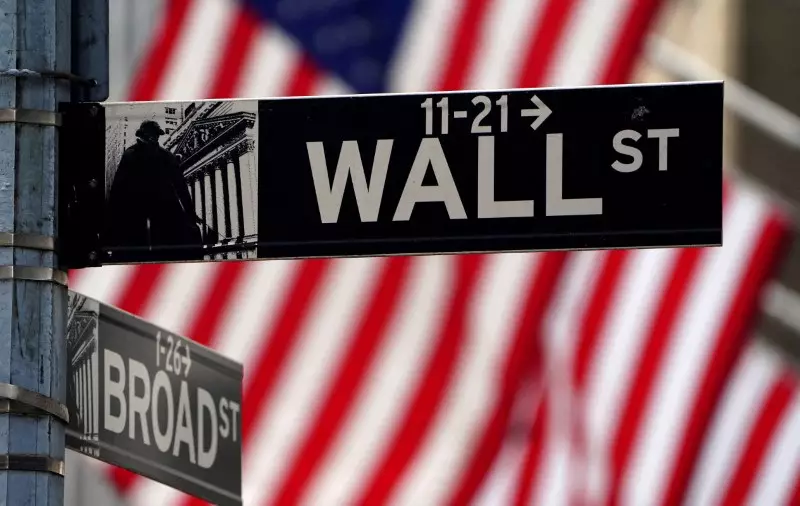As we step into an impactful week for global financial markets, the spotlight is firmly on the monetary policymakers of major economies. The U.S. Federal Reserve (Fed), European Central Bank (ECB), and Bank of Canada will hold their first meetings of 2025, shaping the economic narrative for the months to come. The environment is particularly charged with the return of Donald Trump to the presidency, leaving many investors eager to absorb any signals from Washington that might impact financial stability, especially regarding trade policy. The Fed, coming off a year where it cut rates by 100 basis points, is expected to pause its easing cycle. However, the future trajectory of interest rates still hangs in the balance as market participants look for guidance on how many more cuts may be anticipated as inflationary pressures remain a point of contention.
This convergence of central bank activity comes at a time when data releases are showing a mixed economic picture. With the upcoming advanced reading of U.S. economic growth for the fourth quarter overlapping with heavyweight earnings reports from tech giants like Apple and Tesla, markets might experience increased volatility. Investors are keen to glean insights into how these earnings will be influenced by broader economic factors, potentially setting the tone for the future of these companies.
ECB’s Dilemma: Tariffs and Rate Cuts
Turning our gaze to Europe, the ECB is also grappling with its own set of challenges. With heightened concerns surrounding the threat of tariffs under Trump’s administration, the ECB is widely predicted to cut rates by 25 basis points. Such a decision is rooted in the fear that deteriorating trade relations may place additional burdens on an already sluggish eurozone economy. The delicate nature of these economic conditions requires ECB President Christine Lagarde to navigate carefully between stimulating growth and mitigating inflationary risks.
Policy makers have indicated a consensus towards reducing rates to around 2%, which aligns with the neutral rate believed to neither boost nor hinder economic performance. Yet the looming question remains: will tariff announcements affect this trajectory? The degree to which those tariffs influence inflation is uncertain, and the market is left to wonder how the ECB will respond to evolving economic conditions and external pressures.
As the clock ticks towards significant deadlines, the U.S.’s major trade partners brace for potential fallout from Trump’s tariff policy. The month of February will bring a decision that could see tariffs raised on imports from Canada, China, and Mexico, causing trepidation among global investors. It is worth noting that the proposed tariffs differ in scale; for instance, while a 10% levy on Chinese goods appears modest, neighboring countries face the possibility of 25% duties. This disparity suggests a strategic approach by Trump, possibly aimed at solidifying negotiations with China without antagonizing all allies at once.
The lead up to these tariff announcements is expected to be characterized by a flurry of negotiations and dialogue, although the timing coincides with the Lunar New Year festivities in China. Beijing has taken precautionary steps to shore up its market, potentially mobilizing substantial liquidity to counteract any adverse effects from impending trade policies.
Despite the anxiety surrounding changes in administration and monetary policy, the early period of Trump’s presidency has not sparked a chaotic reaction in the markets. Volatility in stock prices, bond yields, and currency valuations has shown a decrease, as investors seem to cozy up to the idea of stability, at least for the time being. The heightened interest in hedging against currency risks related to the Canadian dollar and Mexican peso has also eased since inauguration day.
However, as every seasoned market observer understands, the unpredictable nature of Trump’s comments could stir renewed volatility. Specifically, Trump’s remarks concerning tariffs could act as a catalyst for market fluctuations in the coming weeks, creating a need for investors to remain vigilant.
As the earnings season in Europe unfolds, the narrative appears overshadowed by uncertainty stemming from U.S. trade policies. While Q4 earnings are projected to show a slight improvement, reflecting a 1.9% growth compared to the previous year, the overall sentiment is cautious. Different sectors will likely display varying performance outcomes, with utilities and financials expected to lead, while energy companies may struggle amid geopolitical and economic headwinds.
Amid these dynamics, European stocks have reportedly received significant interest from investors in January, indicating a possible shift in sentiment despite the ongoing concerns tied to Trump’s administration. Notable earnings reports from major companies such as LVMH, ASML, and Deutsche Bank are expected this week. How these entities perform may not only influence their stock prices but also reflect broader market confidence as investors navigate through this complex landscape.
The upcoming week is crucial for financial markets as central banks set the course for monetary policy, while trade tensions and earnings reports abound. Stakeholders must remain attuned to geopolitical developments and economic indicators shaping the landscape. As the market anticipates a period of change, adaptability and foresightedness will be essential navigational tools in the coming economic terrain.

